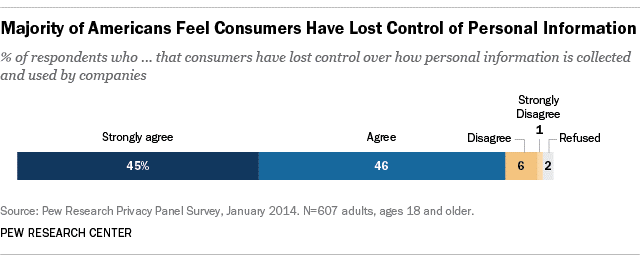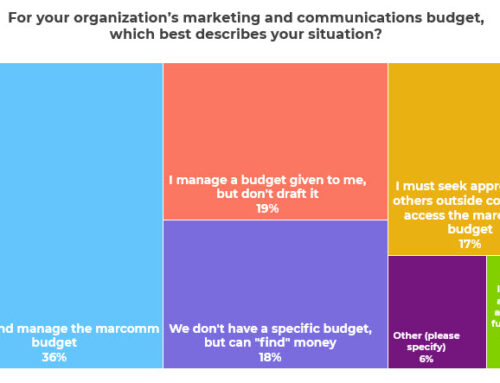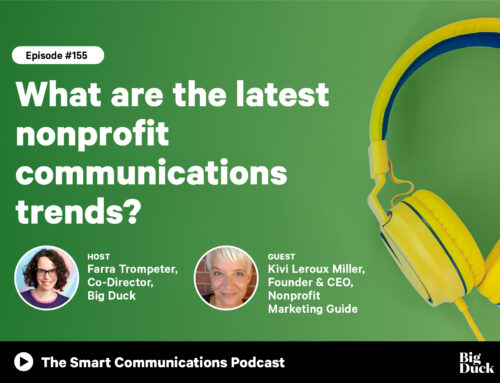I was thrilled to see Pew Research Center’s best of the best extracted from its 150+ research reports released in 2014. It’s so important for us to stay on top of trends in “politics, society, habits and families,” but impossible without folks like Pew highlighting what really matters. Huzzah. Huzzah. Huzzah.
Wondering how these top trends impact your nonprofit marketing decisions? Just take a look at the implications of this one—91% of Americans are alarmed that we’ve lost control of personal information.

https://www.pewresearch.org/files/2014/12/FT_14.12.17_privacy.png
Here’s why this matters to YOU:
1) Folks are going to be more reluctant than ever to share personal information, which means your organization is going to have to work harder to get the data you need to segment your lists (which you have to do to personalize your outreach)
2) That’s a potential barrier to the actions you want them to take—donating and more.
How to follow: I recommend you use this insight to be proactive on privacy, stressing your respect for privacy of personal information. Review, refine and promote your privacy policy as part of your organization’s trustworthiness. Now’s the time!
Here are a couple of other trends likely to impact your marketing. Follow these leads:
1) Trend: Political divide—Republicans and Democrats are more divided along ideological lines—and partisan antipathy is deeper and more extensive—than at any point in the last two decades.
- Recommended Response: 1) Be hypervigilant to avoid political implications in your messages (if you want to nurture supporters across political lines); and 2) Stay attuned to online communities and shut down political fighting that diverts from the issues at hand.
2) Trend: Rising share of never-married adults— After decades of declining marriage rates and changes in family structure, the share of American adults who have never been married is at an historic high.
- Recommended Response: 1) Swallow big and never again forget that the folks you’re trying to engage aren’t necessarily the same as you are; 2) Look hard to uncover assumptions you’ve made about your supporters and prospects, then dig in as possible to correct your insights; then 3) Use your new understanding to shape campaigns relevant to your peoples’ lives—nothing’s more alienating than being talked to as a member of a group that you don’t belong too.
Get out there and market like a ballroom dancer—they lead, you follow. When you use insights like these to match your messages to your people’s lives, priorities and passions, you’re far more likely to connect and motivate action. Give it a spin—I think you’ll see what I mean.

![12 Things You Can Stop Doing Right Now [Infographic]](https://www.nonprofitmarketingguide.com/wp-content/uploads/2025/01/Stop-Doing-2025-Info-hung-up-500x383.png)



